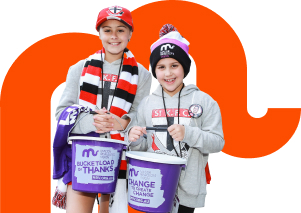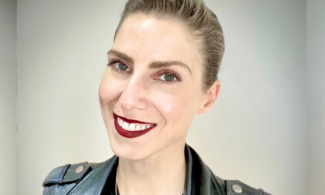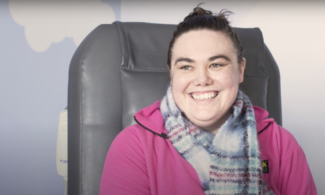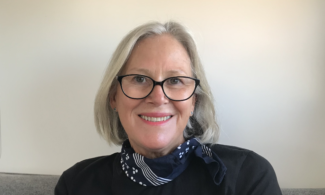
Rob
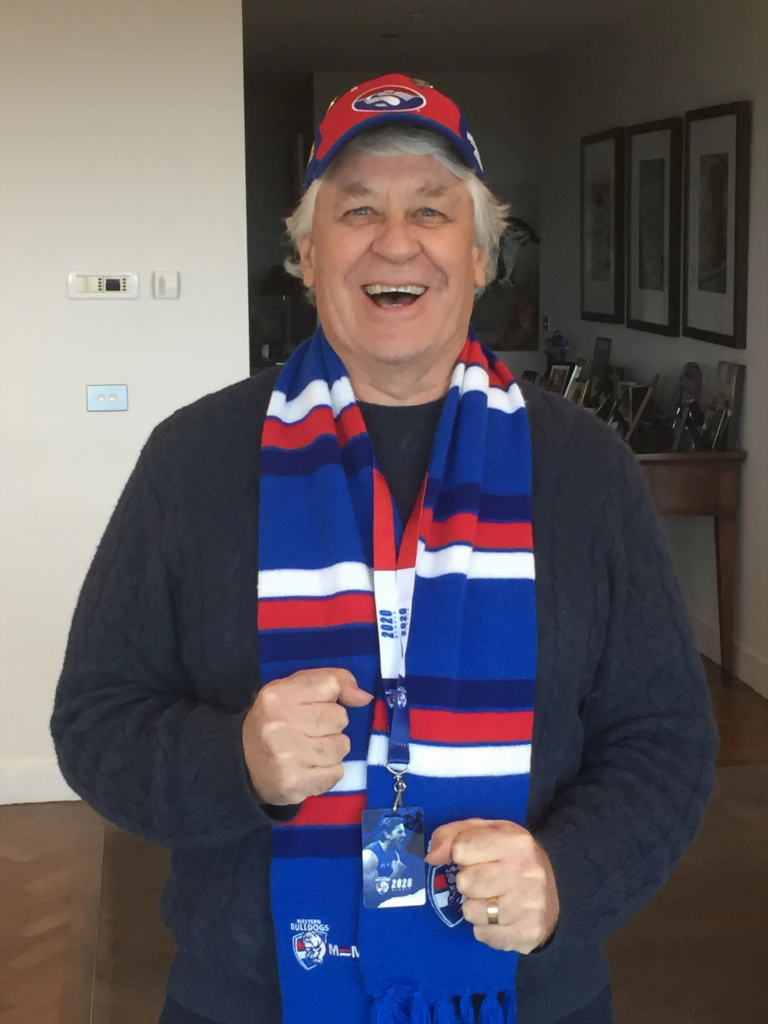
While Aplastic Anaemia commonly affects young people, the condition also peaks in patients over 60 years. Thanks to Rob for sharing his experience with such honesty and good humour.
It was Friday the 13th – and the unlucky connotations of that day were all about to come true.
I was sitting in my race car on the “dummy grid” at the Australian Grand Prix waiting to go out on the track… except Covid-19 was here and the AGP was cancelled!
However, this was just the start of a saga that I wish on nobody and am just so happy to be out the other end of – sort of – now.
First signs that something wasn’t right
In March 2020, I was a pretty average 69-year-old bloke who had retired and was enjoying life to the full. I’ve always been relatively fit (but too fat) and healthy – but I was fine and doing all I could.
Motor racing historic cars is my hobby and whilst I was getting it done, I was getting very tired. I was also getting lots of small bruises and little nicks that didn’t seem to want to stop bleeding as fast as they usually did.
My son and daughter had made comments over the summer about how much time I was snoozing in the chair.
When I mentioned to Diane, my wife of 46 years, that I was feeling a bit drained, she insisted I visit my doctor. She booked an appointment for the Monday morning.
But on Sunday afternoon, I bent down to get something out of the fridge and had a spontaneous bleed inside my right eye. The vision had a big black line that seemed about an inch wide right through the centre of my sight line!
It settled a bit during the rest of the day but I was certainly ready to see the doctor the next morning.
But cleaning my teeth before bed that Sunday night, I also had another fright. The rinse water was blood red. Then I had a look in my mouth and saw all the blood blisters inside my cheeks. I originally thought that the little ulcers I had been getting over the previous weeks had been due to new toothpaste we were using – wrong once again!
An “interesting” day
After seeing the doctor, having some urgent blood test and then off to an eye specialist, by mid-afternoon I was in the emergency department of the fantastic new Epworth Hospital at Waurn Ponds, Geelong – my head spinning – Covid-19 caution all around.
Given I had no pain and felt fine, I was thinking I was a bit of a fraud and really didn’t need to be there!
I couldn’t understand why I was being treated with kid gloves and incredible caution. I found out later that the medical staff had my platelet count which was 1 — yes 1! — and thought that either I was or could start bleeding internally somewhere with the slightest knock.
The on-duty Haematologist immediately did a Bone Marrow biopsy and shortly after was advising me that the initial review of the BM slides showed that the marrow was ‘empty’ and he was very concerned for my health! So that capped off an interesting day.
Off to Melbourne
The doctors at Geelong felt that I really needed to be in Melbourne and to be included in some special treatments that weren’t readily available in Geelong – so off to Royal Melbourne Hospital.
I spent the next couple of weeks having blood and platelet transfusions to try to keep the counts up a bit (floated from 17 to 19 after the transfusions then down to 3 or 4).
Meanwhile, the bureaucrats sorted out which hospital had the clearance to include me on a special trial treatment for Severe Aplastic Anaemia – the first time I had ever heard of this disease.
Then came the advice of what I was heading into and our first knowledge of Maddie’s Vision.
Yes, I had heard of Maddie Riewoldt and that she was ill and her brother Nick had set up a foundation to support research into her affliction but I had no idea what it was really all about.
Due to the impact of Covid-19 on the Victorian medical system, after being transferred from RMH to Peter Mac, I was finally admitted into the Alfred Hospital and accepted into the DIAAMOND-Ava First Trial.
This special trial was a new treatment approach for Severe Aplastic Anaemia using a drug named Avatrombopag, combined with a number of other more usual treatments – like Equine ATG etc.
Talk about mind boggling and trying to come to terms with what I was about to go through! I still had no pain and generally felt okay and, accordingly, still considered myself a bit of a fraud when I saw so many really sick people around me in the ward.
While I had been having blood and platelet transfusions every day, I had still not started any formal treatment. It clearly takes time to do all the various studies into my health and medical history and genetics etc.
Treatment begins…
But on the 26th of April 2020, it all really started – the sedation and the ATG etc over about 24 hours plus numerous other medicines. It was all relatively easy on a physical medical basis but the stress associated with the whole process was overwhelming.
I can’t praise enough the medical staff – nurses and doctors – for the attention I was given and the incredible focus on my physical condition.
I did find though that what I was struggling with was my mental state – I was so emotional about the whole situation and regularly shedding tears or close to it.
The uncertainty about what was going on and what the outcome would be was debilitating and so stressful for not only me but also Diane and our children and their families.
I had this idea in my mind that I was really fine and as I had no visible or evident physical issues – I was okay! Except I wasn’t!! I gradually became weaker and more tired and found that I just didn’t have any strength and was snoozing for much of the day.
I was only in hospital at the Alfred for about a week after the administration of all the main treatment and the start of the special trial drug, Avatrombopag. There were just so many pills to take so often – and I suppose that was the issue – getting my body used to the various medications and seeing what reactions and conflicts were occurring.
I had many minor issues but they seemed big at the time – stomach pain from the volcano erupting down there in response to the incredible concoction of medicines being poured in each few hours. BUT, it did settle down with just some minor discomfort.
I didn’t realise that I would get leg cramps as a reaction to some drug or other, so a big dose twice a day of Magnesium fixed that up and I am still taking it.
The constant blood and platelet transfusions continued from the start of the treatment but the important blood count levels started to increase as I attended Hospital Outpatient Clinic every couple of days, and the transfusions eventually eased off.
What a celebration when my platelet count got to 20 and stayed there for 2 days!!!!
It meant that the medical team could dispense with the transfusions and that the treatment was actually working.
Whilst it seemed a long time, it was probably only a month from commencement until I was no longer having transfusions and relying solely on the Avatrombopag and Cyclosporin, (plus of course the anti-virals and anti-fungals and all the other support meds).
I think the impact of Covid-19 made everything seem so much more intense – the masks, the distancing, the constant washing of hands – because of course with no immune system, the prospect of getting Covid-19 was horrific and frightening – the impact on me if contracted would have been definite!!
During this initial time, Diane and I stayed at our home in St Kilda Road and I was attending Hospital Outpatient Clinic on a bi-daily basis. That meant going through the Alfred which was a major Covid-19 treatment centre and with people everywhere it was like ‘heading into the abyss’ constantly – but there really was no alternative and the attention and treatment was amazing.
The Special Trial Drug course was for 6 months with regular reviews and whilst it seemed to drag at the time it was really over in a flash.
This was when I really became aware of the Maddie’s Vision organisation and the support from telehealth nurse Mei Ling Yeh – she spoke often to my daughter and myself to guide us through and provide support. We were in a very fragile state of mind and the comfort was fantastic.
Without the DIAAMOND-AVA trial there is a very high probability that I wouldn’t be here writing this today! [More information below about the trial and how Maddie’s Vision is supporting this research.]
At my age and family situation, a bone marrow transplant was probably not going to be an option and the Avatrombopag has, I think, been literally a life saver.

Fast-forward to now
It’s now November 2021, 18 months after the commencement of treatment.
Four BM biopsies later, I have lost count of the blood tests, gastroscopies, colonoscopies, Renal Ultrasounds etc – and I feel absolutely great and can see the finish line in April 2022 looming.
Like I said earlier – I still feel like a bit of a fraud – no pain and not seeming to be really ill, but I do listen to the medical advisers and still do what I am told!! I am clearly in remission and have a very positive outlook.
My latest BM biopsy has shown that the marrow is back to ‘normal’ (or even a bit better) for a person of my age. Whoopee!! But platelets are still only around the 70 level and other blood test results are quite good.
It is now a matter of managing the Cyclosporin level to maintain. The issues now are about the effects that past and ongoing medication may have on other organs in my body but that all seems to be manageable also.
The most important thing is that I am just about to load up the race car to head to Sandown raceway for the “Return of the Thunder” historic car race meeting and my first race in the past 18 months, we are opened up from Covid and all is good!!
I can’t express enough my thanks to Maddie’s Vision for everything they have done to solving the issues of Bone Marrow Failure and especially for the support and promotion of the DIAAMOND-AVA trial. I believe it is a major step forward in beating this insidious disease.
The DIAAMOND-AVA trial
The DIAAMOND-AVA trial (Diagnosis of Aplastic Anaemia, Management and Outcomes utilising a National Dataset trial) is a registry-based Medical Research Future Fund supported clinical trial.
The trial uses the infrastructure of the Maddie’s Vision-funded Aplastic Anaemia and other Bone Marrow Failure Syndrome Registry (AAR) and is investigating the safety and efficacy of Avatrombopag, a new agent that stimulates the production of blood cells, for the treatment of severe aplastic anaemia.
This the first trial of a new therapy in this condition to be conducted in Australia for some decades. For more information re the Registry and the DIAAMOND-AVA trial, please visit aaregistry.org.au.
More Personal Stories
Dr Jessica Lake
Dr Jessica Lake is a writer and academic in history and law at the Australian Catholic University. She has published in books, academic journals and newspapers in Australia and the ...
Read full storyEvgenia’s Story
Undergoing a bone marrow transplant can be a lonely experience. Here, Evgenia shares her story in the hope that it will help others going down this road.
Read full storyKayla
Dairy farmer and business owner Kayla talks about her journey with Aplastic Anaemia — and why funding breakthrough research is so important for people with Bone Marrow Failure Syndromes.
Read full storyRoxanne
Roxanne's story: Supporting my son through his treatment for Aplastic Anaemia
Read full story

